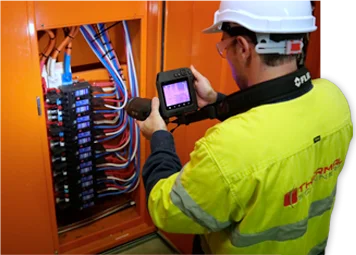What makes thermal imaging more important today compared to before?
Designing and sustaining a building is like navigating a treacherous ocean. The technicians and their equipment are doomed to destruction by an invisible enemy. Technicians may have an easier time finding issues including faulty motors and electrical components, HVAC condensate leaks, inadequate ductwork, and leaking roofs when they employ thermal imaging equipment. Technicians will be able to aid in the promotion of sustainability by preventing minor issues from becoming major ones. They may save money on energy costs for heating and cooling the structure thanks to this.
Departments and organisations that take the time to learn how thermal imaging works and create a process plan for conducting efficient thermal inspections of HVAC, electrical systems, plumbing, and building envelopes may reap benefits that have a direct impact on their bottom lines.
Research Results on Infrared Radiation
Visible light is the only part of the electromagnetic spectrum that can be detected by the human eye; infrared light is invisible. Thermal imaging cameras take data in the infrared part of the electromagnetic spectrum and convert the resulting radiation intensity into a visible image.
Preparations for the inspection team have started.
Management may choose to use the following procedures to maximise the effectiveness of thermal inspections performed by specialists:
Lay down the parameters of the endeavor
Think about the current state of the building. Does it seem like we're using more energy than before? Just how frigid is it here, exactly? Do you feel like there's a wind blowing through here? First, take temperature readings inside and outside to be sure there is at least a ten-degree difference before proceeding with the inspection.
It's best to begin on the periphery and work your way within
The presence of insulation gaps and cold bridges may be easily seen from the outside. Photos of regular-looking locations might be helpful as well. One method to gauge the scope of the issue is to examine how severely it has affected certain locations vs others.
Don't come out here!
At least six hours before doing an interior thermal scan, it is recommended to move furniture away from external walls and remove any pictures that have been placed on walls. Mark the location of the camera on the floor plan with an arrow before initiating the thermal scan. Keep this in mind so you know where the camera is at all times throughout the scan.
Verify that the network is up and running
Heating, ventilation, and air conditioning (HVAC) systems may be inspected for problems such faulty wiring, misaligned ducts, air leaks, dirty filters, and leaky water using thermal imaging. Check the thermostat to check if it is being influenced by a nearby light switch or other heat source. The breaker box is the starting point for any inspection of the electrical system. Look for signs of component overload, overheating, or disconnection and fix them if necessary. Make that the smoke alarms and CO detectors are functioning properly. Finally, look for signs of water damage in the bathroom, the hallways and any other areas where pipes may be placed.
Conclusion
Thermal imaging may be used during renovations to check the efficacy of freshly installed electrical wiring, locate the cause of plumbing leaks, and verify the integrity of insulation. Using thermal imaging equipment, experts can assess and track a building's drying progress.




Comments
Post a Comment